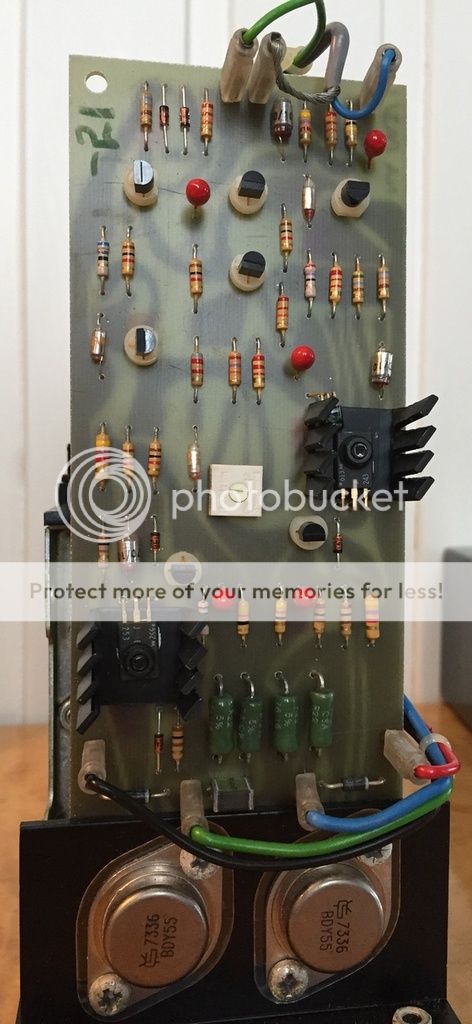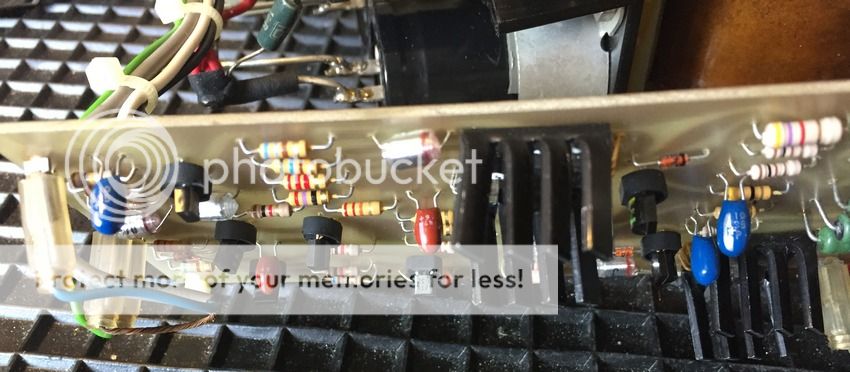Yes. What else other than overheating should we be concerned about in a transformer? Note that the way we extract energy using a rectifier and reservoir capacitors means we extract energy in very short bursts.We must also keep in mind that the VA rating does not tell us how much power the transformer can supply, but rather how much it can supply at the rated duty cycle for extended periods of time without overheating.
It may be a bit off topic at the moment, but I was posting that and was told I was wrong. I was not.
It was in fact not the NAP140, but the NAP120 (dated from 1976) which had the bias transistor connected to one of the drivers (of the darlington side).
The circuit is pretty similar to all other older Naim amps, besides of the VAS transistor, which seemingly was no ZTX type.

It was in fact not the NAP140, but the NAP120 (dated from 1976) which had the bias transistor connected to one of the drivers (of the darlington side).
The circuit is pretty similar to all other older Naim amps, besides of the VAS transistor, which seemingly was no ZTX type.

Last edited:
Member
Joined 2009
Paid Member
Last edited:
Member
Joined 2009
Paid Member
I've used both without a preference. But I would add that I've had more issues with hummmmm from physically vibrating EI's than any toroids. It's also easy to add a little winding of your own to a toroid, whether it be a heater for a small preamp tube in an otherwise SS amp, or just a few turns to power an indicator lamp or LED. I've read that EI's have better resistance to mains noise ingress ion (buy a toroid with an inter winding shield). And to reduce stray fields I add a copper belly strap. My plan with my own Naim clone will be a toroid.
Interesting that they changed from an EI transformer to a toroid. I have a preference for EIs, as long as the stray fields are managed.
What do others think?
The EI equivalent for the big torroid will be very... big. The torroid for my current prototype (brand is EWL) is only 33% the size of my normal EI but playing music since yesterday it is barely warm.
I think there is better EI and there is better torroid. Bad torroid can be caused by simply bad material but bad EI is more due to construction. If every layer in an EI should be separated from other layers using paper separator, imagine the size will be.
I use most often "double C" processors vintage(like Partridge or Marconi construction) and when I find second-hand, R-core from selectronic (which no longer exists), with a little patience, we find in wrecks of B & O beautiful double C transformers too and very good quality.
I do not really like toroids, except those from Arabel and from torodiy who are exceptional.
I do not really like toroids, except those from Arabel and from torodiy who are exceptional.
What I am getting at in my oblique manner is that when a transformer is connected to smoothing caps via diodes, it is sort of like shorting out the transformer secondary every 10ms or so. If you had a perfect circuit with ideal components then this is exactly what would happen. You can simulate it in LTSpice.
When you are choosing smoothing caps, amplifier current, rectifiers and a transformer you need to think about what will actually be going on and how the components will respond. It is too easy just to assume a transformer is a voltage source and capacitor sizes are the bigger the better.
When you are choosing smoothing caps, amplifier current, rectifiers and a transformer you need to think about what will actually be going on and how the components will respond. It is too easy just to assume a transformer is a voltage source and capacitor sizes are the bigger the better.
What I am getting at in my oblique manner is that when a transformer is connected to smoothing caps via diodes, it is sort of like shorting out the transformer secondary every 10ms or so. If you had a perfect circuit with ideal components then this is exactly what would happen. You can simulate it in LTSpice.
When you are choosing smoothing caps, amplifier current, rectifiers and a transformer you need to think about what will actually be going on and how the components will respond. It is too easy just to assume a transformer is a voltage source and capacitor sizes are the bigger the better.
I totally agree.
Very often we tend to exaggerate both in the number of capacitors but also in the total capacity, not correctly sized and calculated.
It is true that we increase the performance of the power supply stage in impulsive operation, but unfortunately an exaggerated sizing of the filtering capacity, this is accompanied by a "swollen" sound and without the right and necessary "speed" on the medium-low.
In a toroidal transformer the primary and secondary windings are coaxial and have relatively high capacitive coupling. On the other hand the leakage inductance is smaller. The coupling can be mitigated using a grounded shield.
A fundamental consideration is that of the capacitive coupling of the two windings, which can have very important effects on the general musicality of an audio electronics.
In my tube constructions I use only R-Core transformers, but since they are low power preamps, I never have problems of availability.
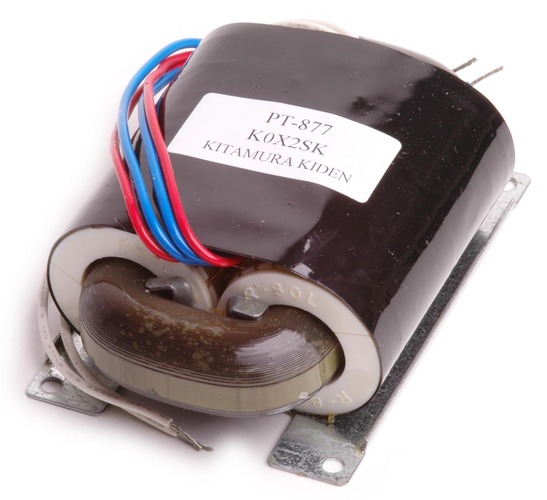
Obviously, however, when it comes to power ratings above 100/200 VA, the situation changes and there are major problems with the availability of R-Core transformers.
But personally I solve happily with toroidal transformers of the Audio Grade type, resin-coated and obviously equipped with a grounding screen (which effectively solves the problem of capacitive coupling) of Polish production.
Never had the slightest hum problem, beautifully crafted, extraordinarily cheap and really able to give a boost to the sound of any audio amplifier.
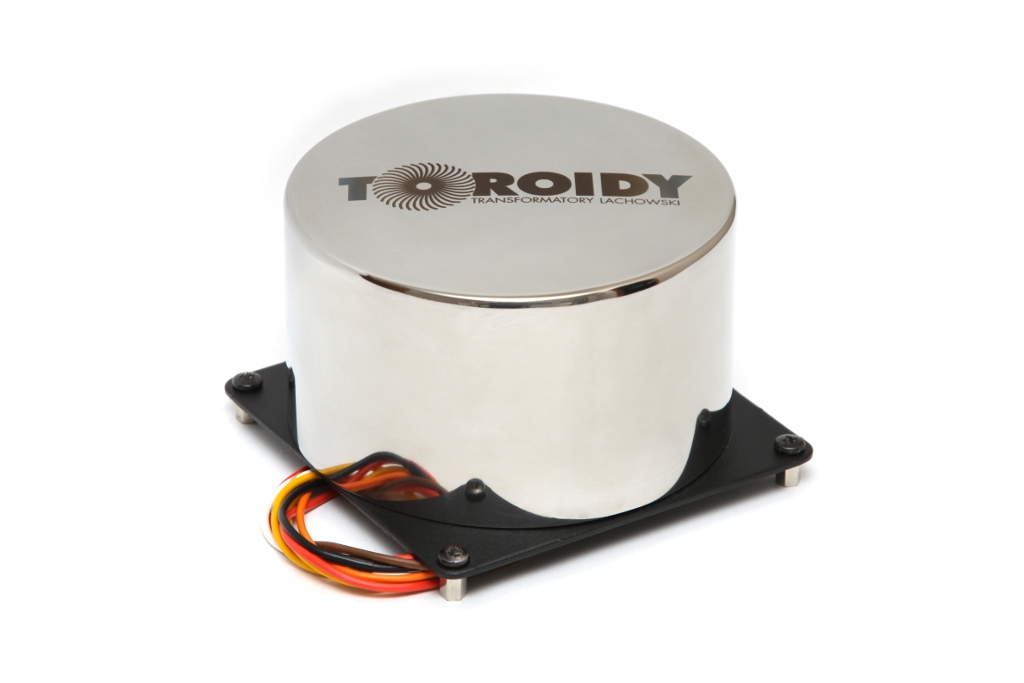
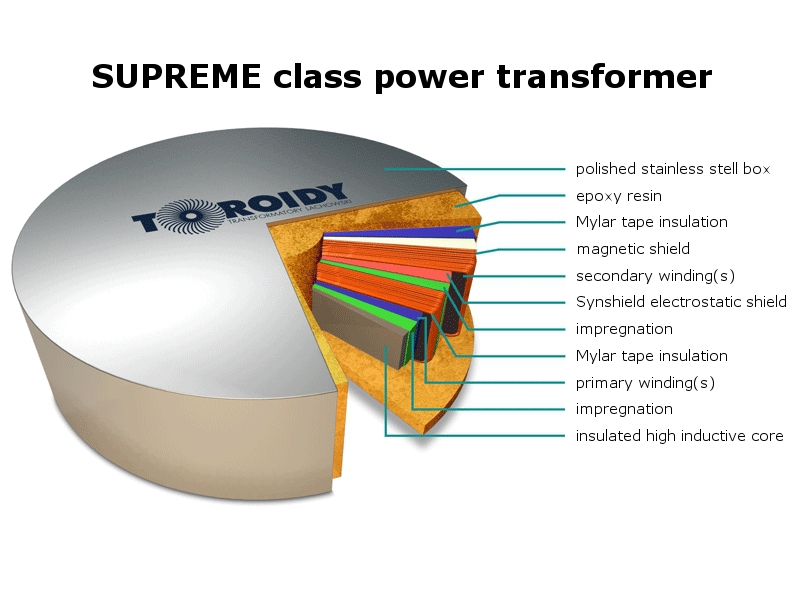
very nice discover of information about the NAP120!
Hi Gareth
I do not find your e-mail address, I would like to send you something about the NAIM Nait5 it may interest you. Can you PM your address, Thanks
Those are valid observations. Are you able to explain those audible traits by electronic properties of the power supply? I think most DIYers and probably and a lot of commercial designers will optimize by trial and error (and then material cost ;-). The art of the science, if you will, is to develop an electrical theory that fits closely with observation and reliably predicts it.It is true that we increase the performance of the power supply stage in impulsive operation, but unfortunately an exaggerated sizing of the filtering capacity, this is accompanied by a "swollen" sound and without the right and necessary "speed" on the medium-low.
Very different from a simple sinusoidal tone, in the case of a complex, variable and impulsive signal, such as the musical signal, the complex interaction between the energy and current supply of the electrolytic capacitors and the load constituted by the loudspeakers strongly variable in terms of Impedance Module and even more in terms of Impedance Phase (with both Capacitive and Inductive trend) there is no law, apart from that of randomness, which allows to solve scientifically this difficult equation.
The great Matti Otala, in the case of musical signals characterized by impulsivity and great dynamics affirmed and demonstrated that the current can assume a value equal to six times, compared to that delivered in continuous sinusoidal mode.
And this unfortunately must be enough to determine by trial and error, the total capacity of filtering, without falling into error, as so often happens in commercial amplifiers, to install really too much capacity.
The great Matti Otala, in the case of musical signals characterized by impulsivity and great dynamics affirmed and demonstrated that the current can assume a value equal to six times, compared to that delivered in continuous sinusoidal mode.
And this unfortunately must be enough to determine by trial and error, the total capacity of filtering, without falling into error, as so often happens in commercial amplifiers, to install really too much capacity.
Last edited:
So the question is: how much is too much capacitance? And the question of how little is too little a transformer.
Say you build a 70W stereo amp and have a 300VA transformer, how big can your caps be?
Naim’s 250DR, 80W/channel, appears to use a 400 or 500VA toroidal and 4x 10mF capacitance.
Say you build a 70W stereo amp and have a 300VA transformer, how big can your caps be?
Naim’s 250DR, 80W/channel, appears to use a 400 or 500VA toroidal and 4x 10mF capacitance.
But personally I solve happily with toroidal transformers of the Audio Grade type, resin-coated and obviously equipped with a grounding screen (which effectively solves the problem of capacitive coupling) of Polish production.
Never had the slightest hum problem, beautifully crafted, extraordinarily cheap and really able to give a boost to the sound of any audio amplifier.
Any idea if the Toroidy Supreme is actually any different to the Toroidy Audio grade in terms of core and windings? Or is it the same thing in a nice case for double the price?
Unfortunately Toroidy don't seem to publish any figures for regulation, so it's hard to work out how good they really are. They also seem remarkably compact compared to the same VA rating from Canterbury Windings.
When is a real transformer not an ideal transformer?
- capacitance: inter-winding, winding to core, winding to shields, between loops of the same winding
- energy losses: winding resistance, core eddy currents & hysteresis, vibration, radiation, external eddy currents
- reactance: leakage inductance
- core flux non-linearity and saturation
- electromagnetic interference from external sources
- capacitance: inter-winding, winding to core, winding to shields, between loops of the same winding
- energy losses: winding resistance, core eddy currents & hysteresis, vibration, radiation, external eddy currents
- reactance: leakage inductance
- core flux non-linearity and saturation
- electromagnetic interference from external sources
Last edited:
- Home
- Amplifiers
- Solid State
- NAP-140 Clone Amp Kit on eBay
